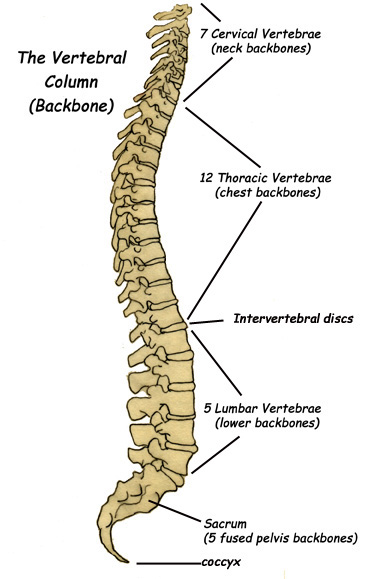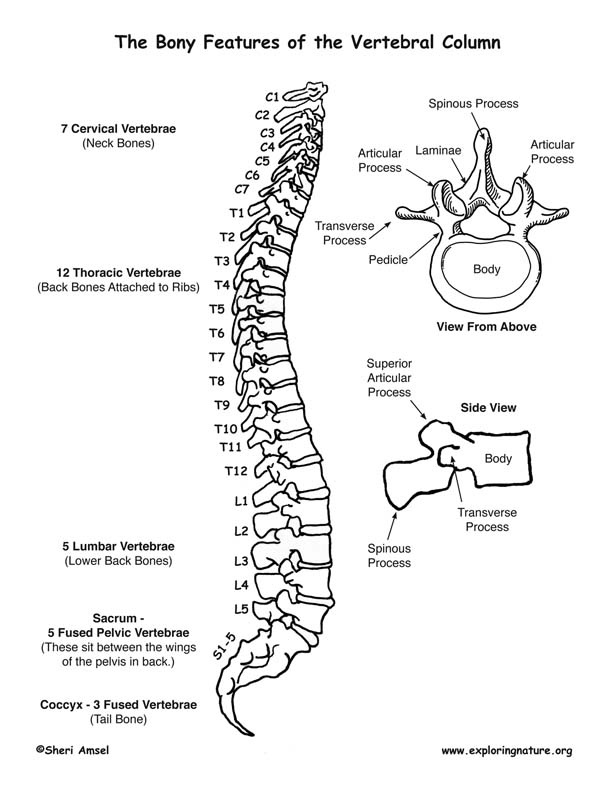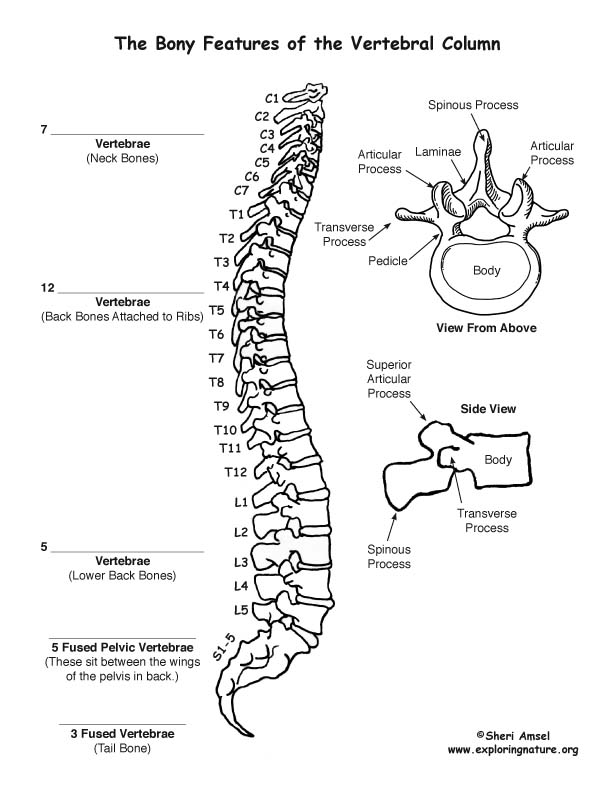

The vertebral column includes; 7 neck vertebra called cervical vertebra, 12 chest vertebra called thoracic vertebra, 5 lower back vertebra called lumbar vertebra, the sacrum (which makes up the back side of the pelvis) and the tail bone or coccyx. The vertebral column is made up of 26 irregular bones. It is attached on top to the skull, which it holds up and to the pelvis on the bottom, where it is anchored to the lower limbs. It surrounds and protects the spinal cord inside it. It anchors the ribcage and the strong muscles of the back that hold the body upright. Each vertebra is separated by a cushion-like disc that helps pad the moving backbones as we move. The vertebral column is about 28 inches long in an average adult. It has an S-shape that helps it be strong and flexible.
LS1.A: Structure and Function
• All living things are made up of cells, which is the smallest unit that can be said to be alive. An organism may consist of one single cell (unicellular) or many different numbers and types of cells (multicellular). (MS-LS1-1)
• Within cells, special structures are responsible for particular functions, and the cell membrane forms the boundary that controls what enters and leaves the cell. (MS-LS1-2)
• In multicellular organisms, the body is a system of multiple interacting subsystems. These subsystems are groups of cells that work together to form tissues and organs that are specialized for particular body functions. (MS-LS1-3)


